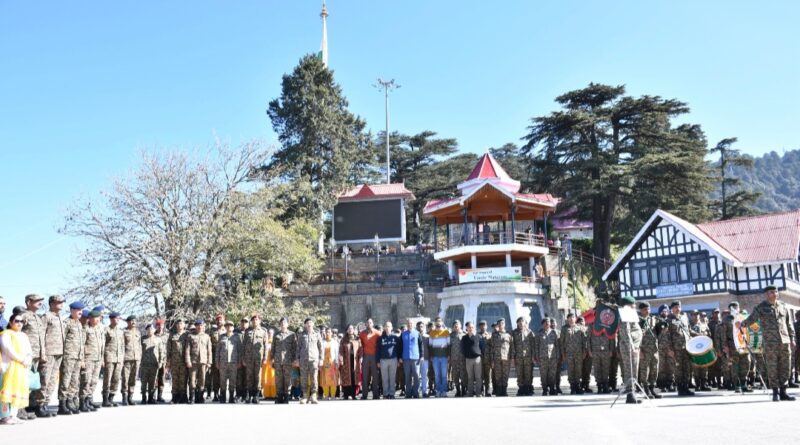ARTRAC celebrates 150 years Of Vande Mataram with a grand mass recital
To commemorate the historic 150th anniversary of the iconic
National song “Vande Mataram”, Headquarters ARTRAC organized a grand mass recital at the
iconic Ridge Maidan, Shimla. The event celebrated the song’s profound role in India’s freedom
movement and reaffirmed its message of National unity. Vande Mataram which translates to
“Mother, I Bow to thee” was composed by Bankim Chandra Chatterjee and was first
published in the literary journal Bangadarshan on 07 Nov 1875. It was set to music by
Rabindra Nath Tagore.
The historical development of the hymn from a poetic composition to a National Song
exemplifies India’s collective awakening against colonial dominance. The song was first
published in 1875. This is corroborated by a passage in the “Bande Mataram” written by
Sri Aurobindo on 16 Apr 1907. Prior to its publication in book form, Anand Math was serialised
in the Bengali monthly magazine Bangadarshan, of which Bankim was the founder editor. The
Song “Vande Mataram” appeared in the very first instalment of the serialisation of the novel in
March-April 1881 issue. In 1907, Madam Bhikaji Lama raised the tricolour flag for the first-time
outside India in Stuttgart, Berlin. The words Vande Mataram were written on the flag.
The song “Vande Mataram” became the emblem of India’s struggle for
independence, encapsulating the collective aspiration for self-governance and the
emotional connection between the populace and their homeland. Initially popularised
during the Swadeshi and anti-partition movements, it quickly transcended regional barriers to
serve as the anthem of National awaking, the refrain of “Vande Mataram” echoed as symbol of
resistance against colonial rule. Leaders, students and revolutionaries drew motivation from
its verses, reciting it at political assemblies, demonstrations and prior to incarceration. “Vande
Mataram” was sung at the 1896 session of the Congress by Rabindra Nath Tagore. At Varanasi
session of the Indian National Congress in 1905, the song “Vande Mataram” was adopted for all
India occasions. On 24 January 1950, Dr Rajendra Prasad addressed the constituent
Assembly, his statement was adopted with Rabindra Nath Tagore’s Jana-Gana-Mana (subject
to such alterations in the words as the Government may authorise as occasion arises) being
adopted as the National anthem of independent India, and Bankim’s Vande Mataram being
adopted as the National Song with an equal status as Jana-Gana-Mana.
The ceremony included military and civil staff posted at HQ ARTRAC. The gathering was
joined by local population and tourists creating a powerful rendition of “Vande Mataram”,
echoing the spirit of patriotism and solidarity.
The event underscored ARTRAC’s commitment to honoring India’s cultural heritage and
reinforcing the values of unity and integrity that the National song embodies.



